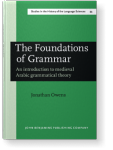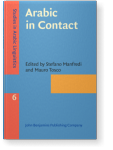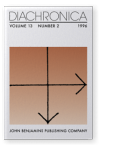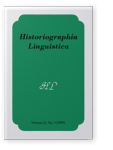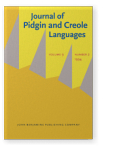Jonathan Owens
List of John Benjamins publications for which Jonathan Owens plays a role.
Journals
ISSN 2950-1806 | E-ISSN 2950-1792
ISSN 0920-9034 | E-ISSN 1569-9870
Book series
Titles
Neighborhood and Ancestry: Variation in the spoken Arabic of Maiduguri, Nigeria
Jonathan Owens
[IMPACT: Studies in Language, Culture and Society, 4] 1998. xiii, 396 pp.
Subjects Sociolinguistics and Dialectology
Early Arabic Grammatical Theory: Heterogeneity and standardization
Jonathan Owens
[Studies in the History of the Language Sciences, 53] 1990. xvi, 294 pp.
Subjects Afro-Asiatic languages | History of linguistics | Syntax
The Foundations of Grammar: An introduction to medieval Arabic grammatical theory
Jonathan Owens
[Studies in the History of the Language Sciences, 45] 1988. xii, 371 pp.
Subjects Afro-Asiatic languages | History of linguistics | Medieval linguistics | Syntax
2025 Chapter 7. Imperfect verbal prefixes as discourse markers Perspectives on Arabic Linguistics XXXV: Papers from the Annual Symposium on Arabic Linguistics, Washington, D.C., 2022, Alqassas, Ahmad (ed.), pp. 158–179 | Chapter
Many varieties of Arabic have one or more pre-verbal imperfect markers. While some, like the Egyptian future prefix ħa- or ha-, have a clearly profiled meaning, many defy simple definition. We concentrate on two of these with numerous shared attributes: Iraqi da- and an Upper Egyptian morpheme… read more
2018 Why linguistics needs an historically oriented Arabic linguistics Arabic in Contact, Manfredi, Stefano and Mauro Tosco (eds.), pp. 207–232 | Chapter
One of the more recent, and certainly one of the most empirically well-founded accounts of language change is Labov’s (2007) division between transmission and diffusion. The former results in gradual change via incrementation, the latter in larger and irregular change. This study examines the… read more
2014 The morphologization of an Arabic creole Arabic-based Pidgins and Creoles, Manfredi, Stefano and Mauro Tosco (eds.), pp. 232–298 | Article
East African Nubi has classic attributes of a creole — it was formed in a short period of time and its structure diverges dramatically from its lexical source, Egyptian and Sudanic Arabic — yet it differs from most creoles as well in that it has a fairly robust morphology (Owens 2001). One could… read more
2008 Yaʕni: What it (really) means Perspectives on Arabic Linguistics: Papers from the annual symposium on Arabic linguistics, Parkinson, Dilworth B. (ed.), pp. 83–113 | Article
2005 Pre-diaspora Arabic: Dialects, statistics and historical reconstruction Diachronica 22:2, pp. 270–307 | Article
Arabic dialects, the native spoken Arabic of about 250 million people, are spread over an immense, contiguous geographical area from Iran to Lake Chad, from Morocco to Yemen. Corresponding to this geographical spread is considerable linguistic diversity. An explanation for this diversity has… read more
1997 Arabic-based Pidginsand Creoles Contact Languages: A wider perspective, Thomason, Sarah G. (ed.), pp. 125–172 | Article
1996 Idiomatic Structure and the Theory of Genetic Relationship Diachronica 13:2, pp. 283–318 | Article
SUMMARY It has been an assumption of many practitioners of comparative linguistics that genetic relations are defined between languages as holistic entities. A recent explicit expression of this position is Thomason &Kaufman (1988). An alternative viewpoint, probably a minority position, is that… read more
1995 The comparative study of medieval Arabic grammatical theory: A Mollusc replies to A. E. Houseman, Jr. Historiographia Linguistica 22:3, pp. 425–440 | Miscellaneous
1990 East African Nubi: Bioprogram Vs Inheritance Diachronica 7:2, pp. 217–250 | Article
SUMMARY A central question in Creole studies has been to ascertain to what degree the structure of creole languages is determined by universal processes, as opposed to inheritance from super/substratal sources. The universalist position has been most strongly advocated by Derek Bickerton, who sees… read more
1990 Themes in the Development of Arabic Grammatical Theory Studies in the History of Arabic Grammar II: Proceedings of the second symposium on the history of Arabic grammar, Nijmegen, 27 April–1 May, 1987, Versteegh, Kees and Michael G. Carter (eds.), pp. 253–264 | Article




